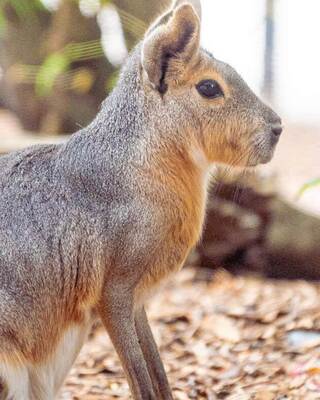
Patagonian Cavy
Patagonian cavies are fascinating large rodents from Argentina, known for their strong claws, tall ears, and short tails. Despite their size, these unique animals have some interesting traits and behaviors that set them apart from other rodents.
Patagonian cavies typically walk on all fours, but they are capable of more impressive movements like hopping, galloping, or even stotting—bouncing on all fours in a series of quick, energetic movements. This agility is due to their long legs, which also help them cover the terrain in their native Argentine habitat.
Patagonian cavies are herbivores, primarily feeding on grasses, but they have an adaptable diet. They also consume cactuses, fruits, seeds, flowers, and even their own poop to help absorb additional nutrients from their food. It’s a fascinating survival strategy for maximizing nutrient absorption!
Patagonian cavies form mated pairs for life, and the male cavy is protective of his female and their offspring. He will aggressively defend them from predators and other cavies, showing strong family bonds. This social structure ensures the survival of their young in the wild.
Meet Harriet
At the zoo, we care for a Patagonian cavy named Harriet. Her diet includes rodent chow, herbivore biscuits, and a variety of fresh fruits and vegetables to keep her healthy and energized.
Since cavies’ teeth grow continuously, chewing is essential for keeping them at the right length. Harriet loves to gnaw on dried fruit and bamboo, which helps maintain her dental health. She also uses her strong claws to dig—an instinctive behavior that mirrors life in the wild.
Patagonian cavies are diurnal, so Harriet is most active early in the morning or late in the afternoon. During the hottest part of the day, you’ll likely find her relaxing in the shade to stay cool.